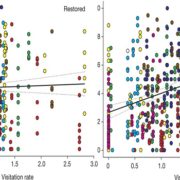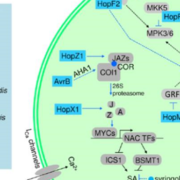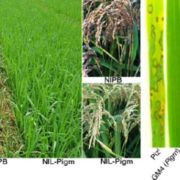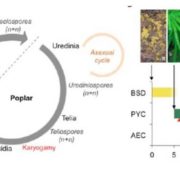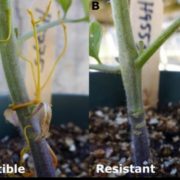LecRK-V and trehalose-associated immunity: a conserved defense mechanism across kingdoms
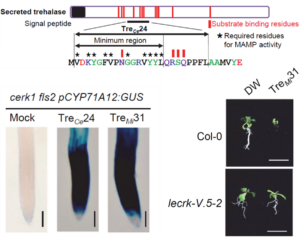 Membrane-localized receptor-like kinases (RLKs) are essential for perceiving diverse signaling molecules, including proteins, polysaccharides, hormones, reactive oxygen species, ions, and damage-associated molecular patterns. Among the well-characterized RLKs, FLS2, EFR, and CERK1 are known to recognize bacterial and fungal molecular patterns, triggering plant immune responses. However, the Arabidopsis genome encodes approximately 600 RLKs, the majority of which remain functionally uncharacterized. In a recent study, Iino, Kadota, and colleagues investigated how Arabidopsis perceives nematodes, uncovering a trehalase-derived peptide that activates immune responses in the Col-0 ecotype but not in Cvi-0. Through genetic crosses and QTL mapping, the authors identified members of the LecRK-V family as receptors for this peptide. Intriguingly, this ligand-receptor pair is evolutionarily conserved across insects and fungal pathogens, underscoring the broad-spectrum role in plant defense. This study highlights the critical function of the LecRK-V family in pathogen perception and suggests that trehalase/trehalose-associated components serve as conserved immune signals across different biological kingdoms. (Summary by Ching Chan @ntnuchanlab) bioRxiv 10.1101/2025.02.02.636166
Membrane-localized receptor-like kinases (RLKs) are essential for perceiving diverse signaling molecules, including proteins, polysaccharides, hormones, reactive oxygen species, ions, and damage-associated molecular patterns. Among the well-characterized RLKs, FLS2, EFR, and CERK1 are known to recognize bacterial and fungal molecular patterns, triggering plant immune responses. However, the Arabidopsis genome encodes approximately 600 RLKs, the majority of which remain functionally uncharacterized. In a recent study, Iino, Kadota, and colleagues investigated how Arabidopsis perceives nematodes, uncovering a trehalase-derived peptide that activates immune responses in the Col-0 ecotype but not in Cvi-0. Through genetic crosses and QTL mapping, the authors identified members of the LecRK-V family as receptors for this peptide. Intriguingly, this ligand-receptor pair is evolutionarily conserved across insects and fungal pathogens, underscoring the broad-spectrum role in plant defense. This study highlights the critical function of the LecRK-V family in pathogen perception and suggests that trehalase/trehalose-associated components serve as conserved immune signals across different biological kingdoms. (Summary by Ching Chan @ntnuchanlab) bioRxiv 10.1101/2025.02.02.636166



